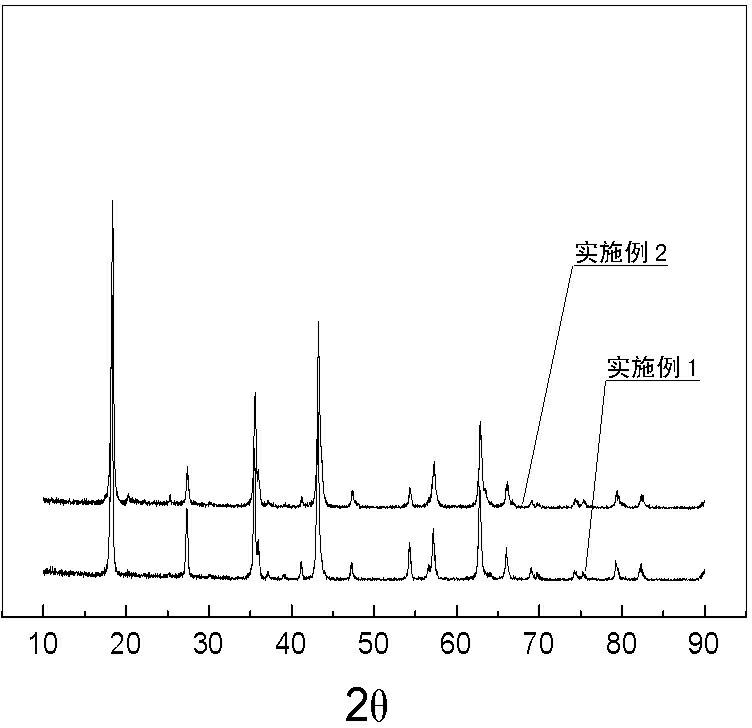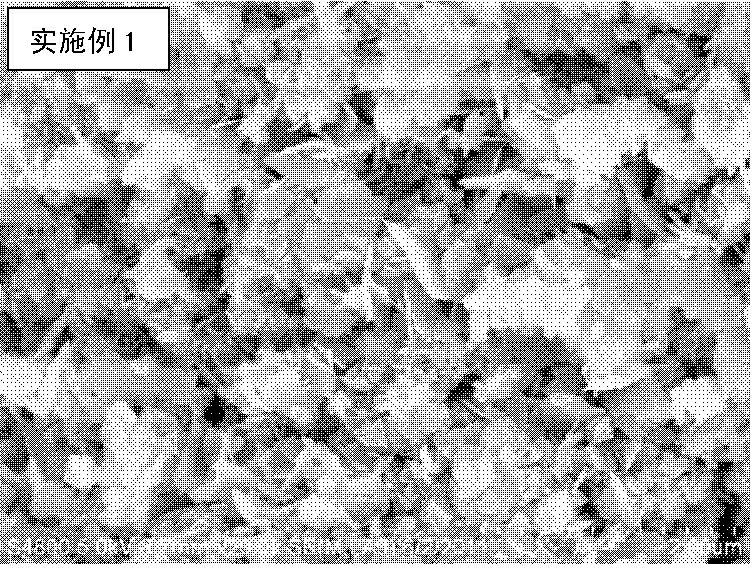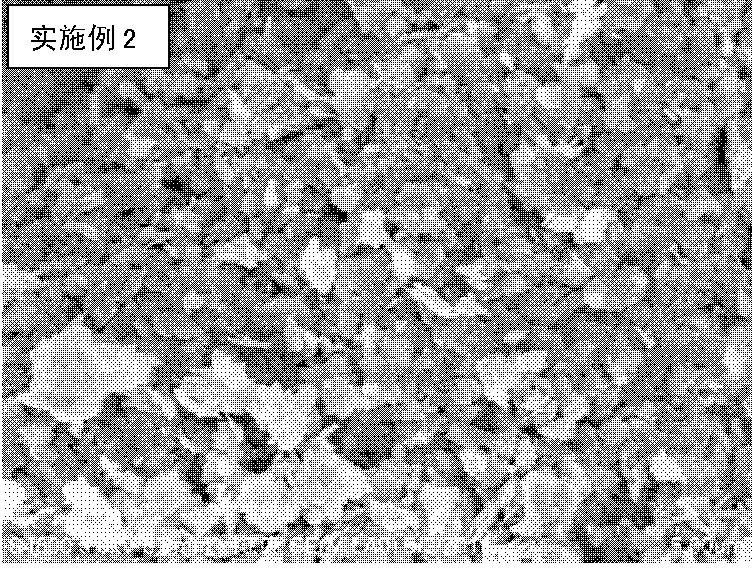Preparation method for lithium titanate and graphene composite electrode materials
A graphene composite and electrode material technology, applied in the direction of battery electrodes, circuits, electrical components, etc., can solve the problems of limited contact area, restrict the application of electric vehicles, hinder the industrialization of electric vehicles, etc., and achieve the improvement of electronic conductance and ion conductance, Good rate charge and discharge performance, easy to control the preparation process
- Summary
- Abstract
- Description
- Claims
- Application Information
AI Technical Summary
Problems solved by technology
Method used
Image
Examples
Embodiment 1
[0031] (1) Weigh 2.00g cetyltrimethylammonium bromide (CTAB), 0.32g urea (CON 2 h 4 ) and 0.96g lithium hydroxide (LiOH.H 2 O) Dissolve in 60ml of deionized water and stir for 1 hour to obtain a stable solution A with a lithium ion concentration of about 0.4mol / L.
[0032] (2) In the state of ultrasonic treatment, add 4.08ml of butyl titanate to 30ml of deionized water, sonicate for 15min, and stir for 1h to prepare a solution B with a titanium ion concentration of 0.4mol / L.
[0033] (3) Add solution A to solution B under the action of an ultrasonic field, stir for 5 min, and then add 5ml of hydrazine hydrate to obtain solution C.
[0034] (4) Transfer the obtained solution C into a polytetrafluoroethylene reactor, put it into an oven, and react at 180°C for 48 hours.
[0035] (5) Suction filter, wash, and dry the obtained solution, and finally sinter at 600°C for 6 hours under an argon atmosphere. After cooling, the lithium titanate product is obtained, and its morphology ...
Embodiment 2
[0038] (1) Weigh 2.00g cetyltrimethylammonium bromide (CTAB), 0.32g urea (CON 2 h 4 ) and 0.96g lithium hydroxide (LiOH.H 2 O) Dissolve in 60ml of deionized water and stir for 1 hour to obtain a stable solution A with a lithium ion concentration of about 0.4mol / L.
[0039] (2) In the state of ultrasonic treatment, add 7ml of graphene solution with a concentration of 0.3g / L to 23ml of deionized water, then add 4.08ml of butyl titanate, ultrasonic for 15min, and stir for 1h to obtain the concentration of titanium ions It is solution B of 0.4mol / L.
[0040] (3) Add solution A to solution B under the action of an ultrasonic field, stir for 5 min, and then add 5ml of hydrazine hydrate to obtain solution C.
[0041] (4) Transfer the obtained solution C into a polytetrafluoroethylene reactor, put it into an oven, and react at 180°C for 48 hours.
[0042] (5) Suction filter, wash, and dry the obtained solution, and finally sinter at 600°C for 6 hours under an argon atmosphere. Aft...
Embodiment 3
[0045] (1) Weigh 2.00g cetyltrimethylammonium bromide (CTAB), 0.32g urea (CON 2 h 4 ) and 0.96g lithium hydroxide (LiOH.H 2 O) Dissolve in 60ml of deionized water and stir for 1 hour to obtain a stable solution A with a lithium ion concentration of about 0.4mol / L.
[0046] (2) In the state of ultrasonic treatment, add 13ml of graphene solution with a concentration of 0.3g / L to 17ml of deionized water, then add 4.08ml of butyl titanate, ultrasonic for 15min, and stir for 1h to obtain the concentration of titanium ions It is solution B of 0.4mol / L.
[0047] (3) Add solution A to solution B under the action of an ultrasonic field, stir for 5 min, and then add 5ml of hydrazine hydrate to obtain solution C.
[0048] (4) Transfer the obtained solution C into a polytetrafluoroethylene reactor, put it into an oven, and react at 180°C for 48 hours.
[0049] (5) Suction filtration, washing, and drying of the obtained solution, and finally sintering at 600° C. for 6 hours under an ar...
PUM
| Property | Measurement | Unit |
|---|---|---|
| Charge and discharge specific capacity | aaaaa | aaaaa |
| Charge and discharge specific capacity | aaaaa | aaaaa |
| Charge and discharge specific capacity | aaaaa | aaaaa |
Abstract
Description
Claims
Application Information
 Login to View More
Login to View More - R&D
- Intellectual Property
- Life Sciences
- Materials
- Tech Scout
- Unparalleled Data Quality
- Higher Quality Content
- 60% Fewer Hallucinations
Browse by: Latest US Patents, China's latest patents, Technical Efficacy Thesaurus, Application Domain, Technology Topic, Popular Technical Reports.
© 2025 PatSnap. All rights reserved.Legal|Privacy policy|Modern Slavery Act Transparency Statement|Sitemap|About US| Contact US: help@patsnap.com



